Taylor Valley glaciers, Dry Valleys, Antarctica
Taylor Valley is a cold-desert valley in the Dry Valleys region, running for about 30 km from Taylor Glacier to the sea at McMurdo Sound. Mean annual air temperatures in the valley bottom are around -18 to –20°C, with extremes of –60°C in winter and +10°C in summer. Precipitation falls mainly as snow in summer; in neighbouring Wright Valley the annual amount is just 6 mm of water-equivalent a year. Apart from Taylor Glaciers itself, numerous small “alpine” glaciers drape the hillsides on either side of the valley, with only a few reaching the valley floor (see Suess Glacier photos). These alpine glaciers are generally stable, and have either advanced or receded just a few metres since the first observations were made in the early 20th century. |
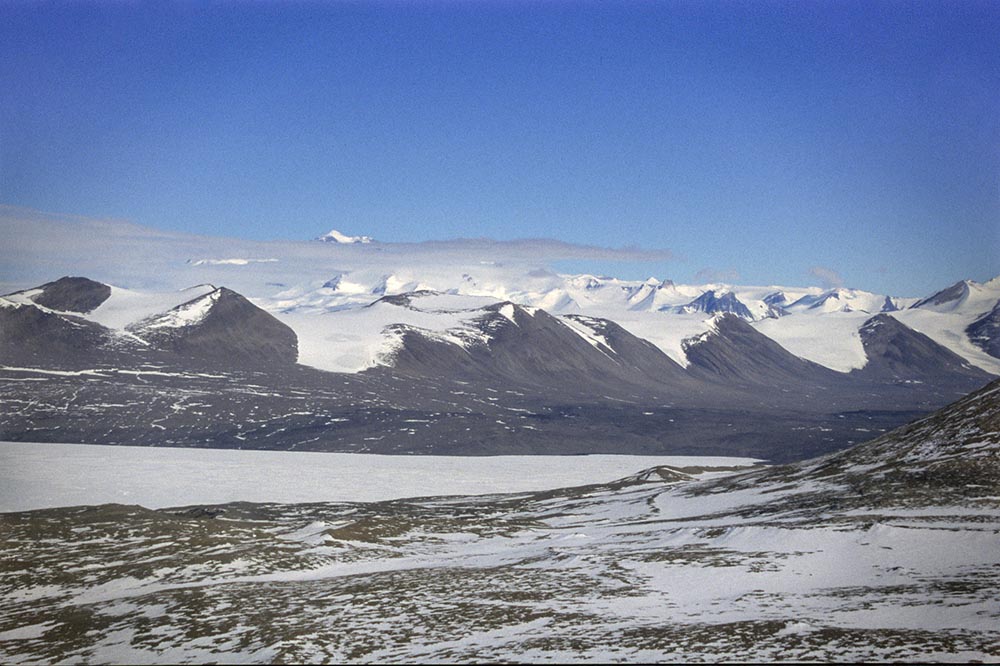
The south side of lower Taylor Valley, illustrating a series of small glaciers on the flanks of Kukri Hills. Rising above the bank of clouds is the 4000 m high Royal Society Range.
| 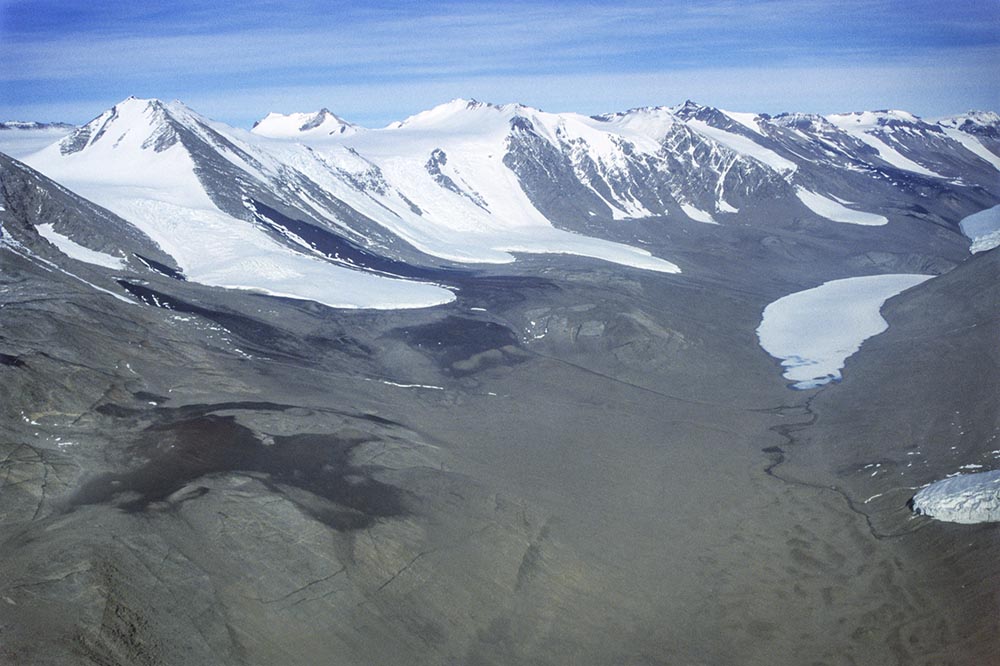
The middle reach of Taylor Valley, with so-called “alpine glaciers” on the flanks of Kukri Hills. From left to right are Sollas, Hughes and Calkin glaciers. The snouts of Taylor Glacier (background) and LaCroix glaciers are visible on the right, with frozen Lake Bonney on the floor of the valley.
| 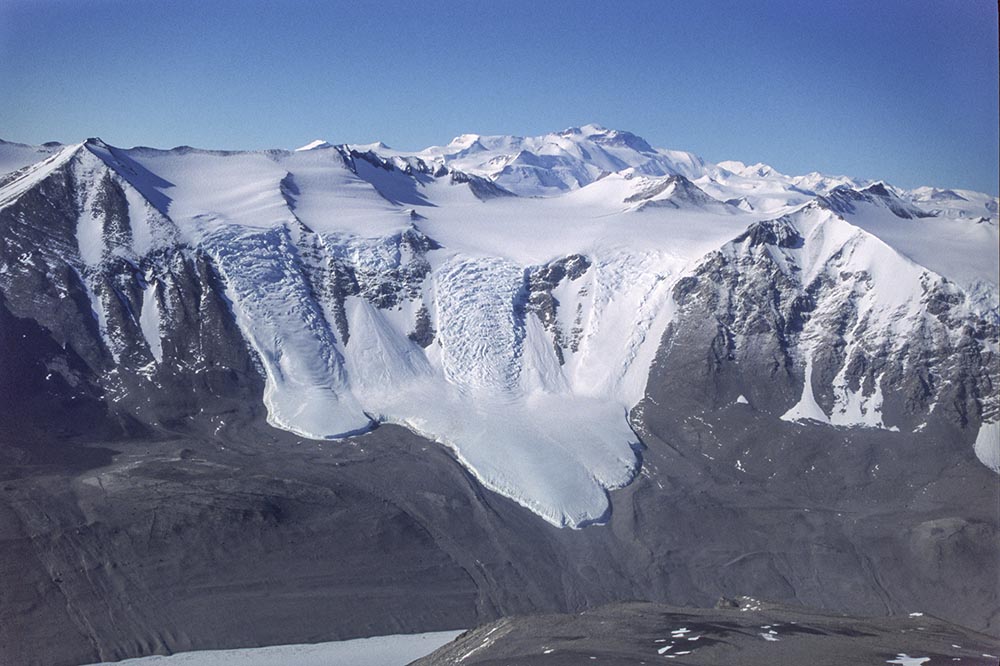
Hughes Glacier comprises several flow units that spill out, via heavily crevassed icefalls, from a complex series of cirques on the flanks of the Kukri Hills. The snout of the glacier is a cliff about 20 m high, beyond which a series of lateral moraines are evident. The much higher Royal Society Range dominates the background.
| 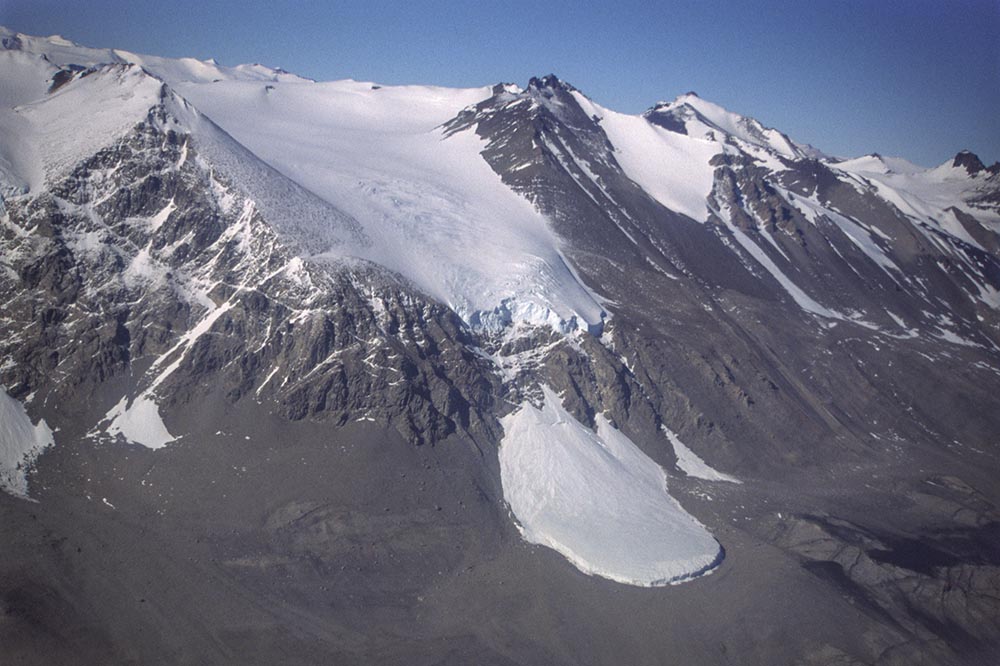
Calkin Glacier in the Kukri Hills flows out of a shallow cirque and then breaks up as it spills over a rock cliff, resulting in ice avalanches. The avalanche debris then consolidates to form a ‘new’ glacier below. This feature is referred to either as a ‘rejuvenated’ or a ‘regenerated’ glacier.
|
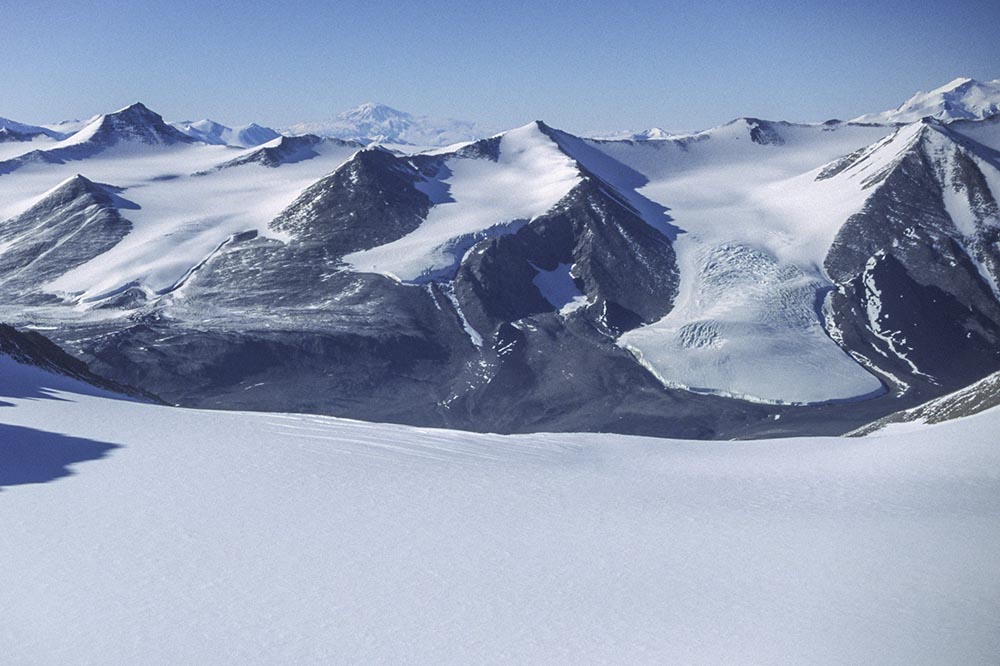
On the opposite side of Taylor Glacier is the Asgard Range which bears several cirque glaciers, some of which extend beyond their amphitheatres. Here are Schlatter Glacier on the left and Catspaw Glacier on the right. A name for the middle one has not been located. In the background is Mt Discovery, a volcano on Ross Island which is featured in the photograph set: McMurdo Ice Shelf. On the far right is the Royal Society Range.
| 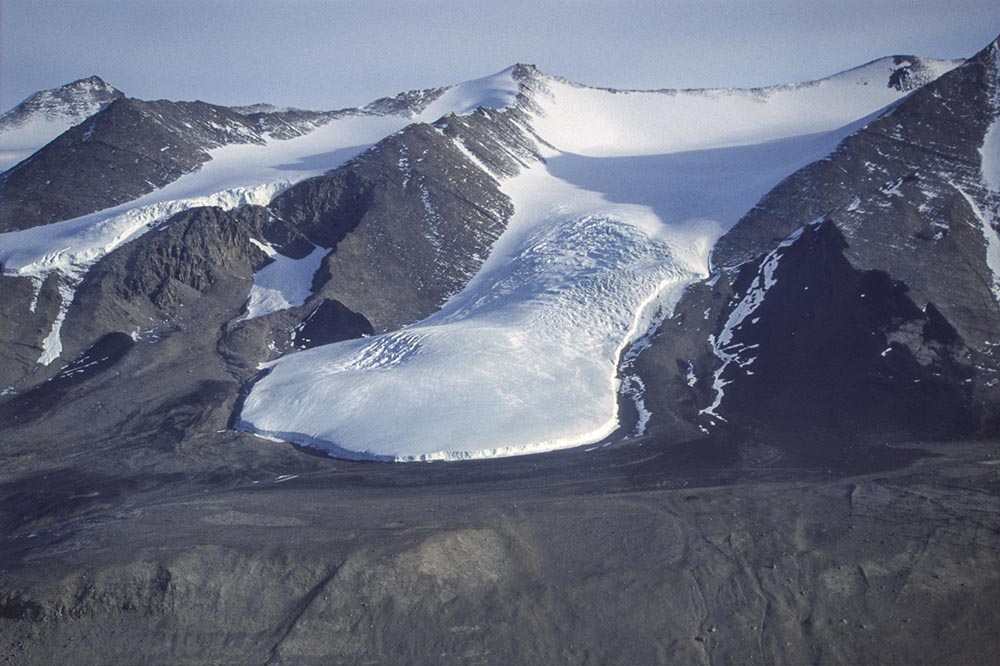
A closer view of Catspaw Glacier. It flows out of its cirque via an icefall and then spreads out as a lobe on a rock bench above Taylor Glacier. The latter is at a lower level than shown in the photograph. Note also the narrow arêtes that flank the upper reaches of the glacier.
| | |